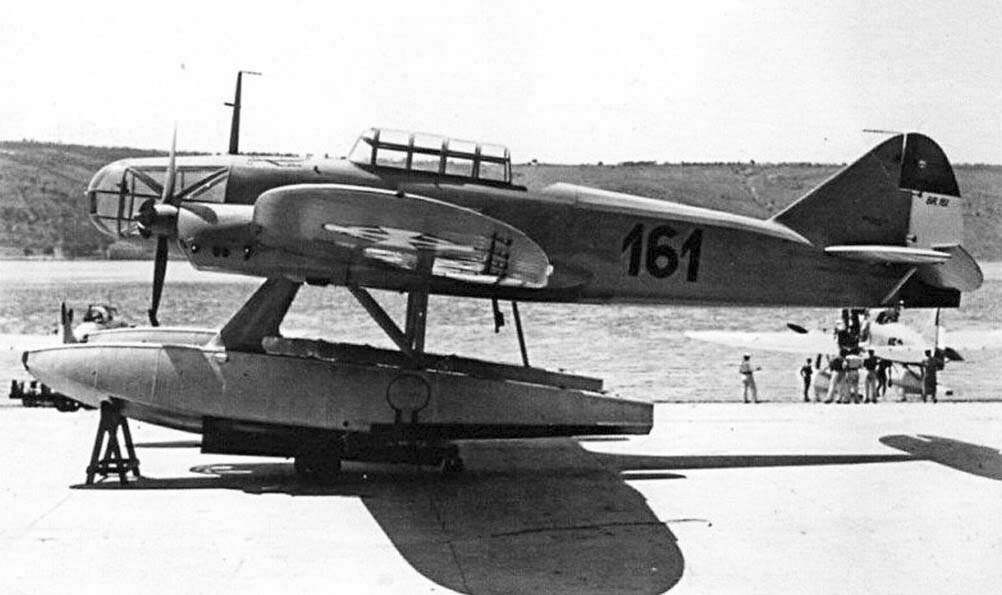Rogožarski SIM-XIV-H
The Rogožarski SIM-XIV-H was a 1930s Yugoslav coastal reconnaissance floatplane and light bomber, twin-engined, with three crew members. It was designed and built at the Rogožarski factory in Belgrade.
All 19 of the SIM-XIV-H and SIM XIVB-Hs were deployed to the naval bases at Divulje (near Split) and Kumbor (Kotor). Before Yugoslavia entered the war, they were used to carry out the duties for which they were designed, with intense training activity due to the approaching threat of war. In that period, three aircraft were destroyed, with 16 aircraft remaining in service when the Germans invaded Yugoslavia
These aircraft were used in the April war in operations against the Germans and Italians along the Adriatic coast, carrying out reconnaissance and aiding mining operations. Five aircraft were destroyed in the fight against the attacking forces. Four aircraft attempted to escape to Greece, of which two were destroyed and two reached British bases in Egypt via Crete. These two aircraft were used for reconnaissance missions over the Mediterranean Sea until one was lost and the other scrapped because of lack of spares. Italy seized a total of eight aircraft, a SIM-XIV-H and 7 SIM-XIVB-Hs. One specimen was immediately transferred to the Test Center at Vigna di Valle, where it showed better results than found in testing in Yugoslavia while the others were transferred to the aeronautical school at Orbetello, continuing in use for training and communications purposes until the end of 1942.
Rogožarski SIM-XIV-H on Land
Rogožarski SIM-XIV-H on Water

Rogožarski SIM-XIV-H 
Rogožarski SIM-XIV-H 
Rogožarski SIM-XIV-H 
Rogožarski SIM-XIV-H 
Rogožarski SIM-XIV-H 
Rogožarski SIM-XIV-H 
Rogožarski SIM-XIV-H 
Rogožarski SIM-XIV-H 
Rogožarski SIM-XIV-H 
Rogožarski SIM-XIV-H 
Rogožarski SIM-XIV-H 
Rogožarski SIM-XIV-H 
Rogožarski SIM-XIV-H 
Rogožarski SIM-XIV-H 
Rogožarski SIM-XIV-H











